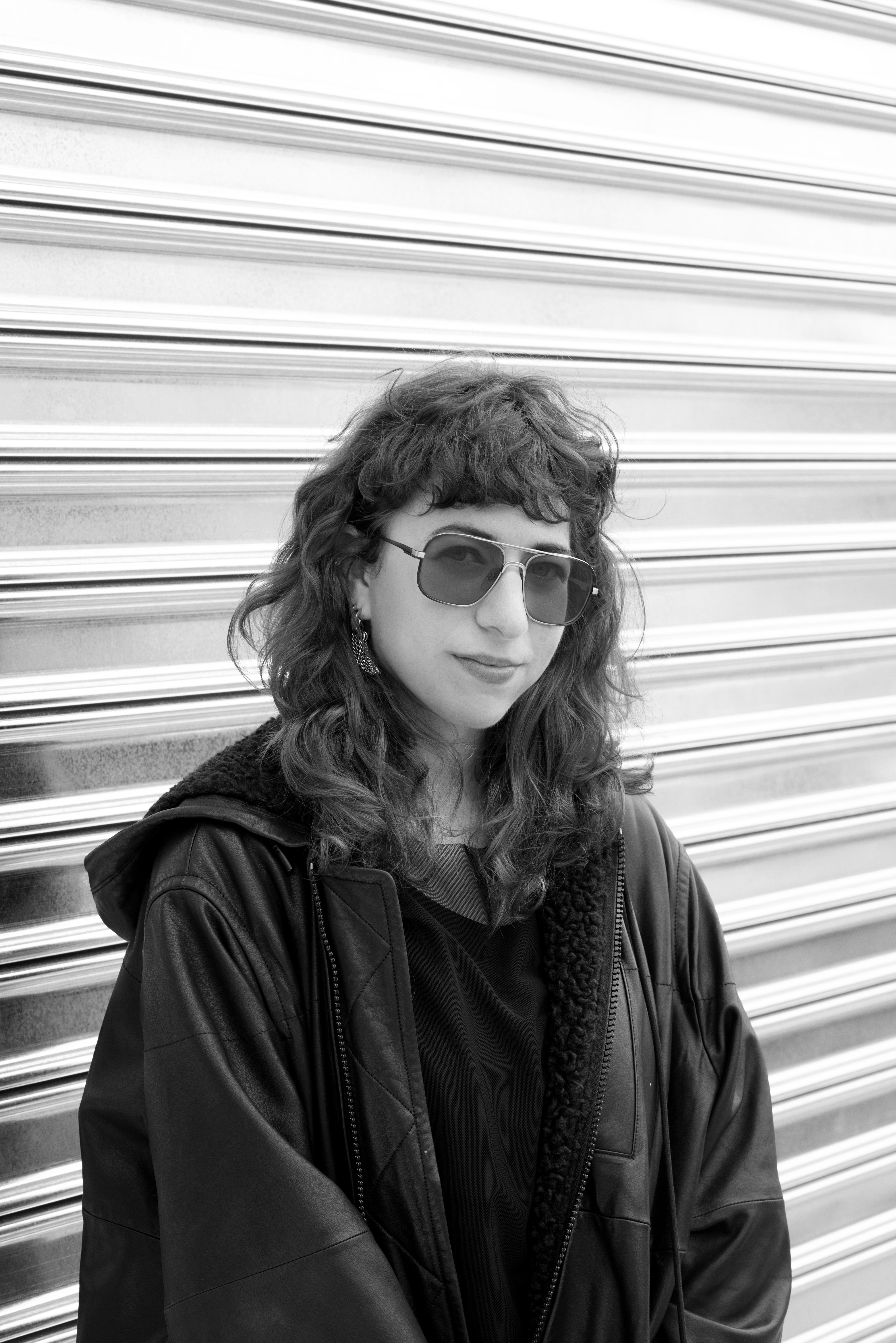How to Write an Artist Bio
As someone who interviews people for a living, I often ask interview subjects for a bio and a headshot. But any time someone has asked the same of me, I balk!
I’ve got the headshot covered but the bio gives me pause every single time, especially when I’m asked to write a bio as an artist. I find it challenging to write my artist bio. I want to sound serious but not pretentious. I want to honor the medium that I work in without making it more than it is. And I want to do it in a way that makes me seem like a good writer.
In some ways, it’s hard to write an artist bio for the same reasons that it’s hard to write resumes and cover letters. An artist bio needs to thread the needle of showcasing your accomplishments without appearing to brag. It can feel challenging to condense your entire artistic practice, vision, and CV into a few short sentences. If you don’t have accolades or degrees from fancy institutions, you might feel inadequate as you write your bio. Plus, they can often feel formulaic and constraining as a written form.
But, even though they can be challenging to write, artists need bios. You need them for grant applications, media coverage, your website, for any show that you’re in, or any place where you are speaking or presenting publicly. Having a better grasp on your bio will help you seek out new opportunities and respond confidently when asked to provide that bio.
Fractured Atlas is dedicated to helping artists like you (and like me!) manage the practical aspects of your creative life; from finding studios to raising money to accepting tax-deductible donations. If you don’t feel like you can write about yourself or your work, you might be holding yourself back from seeking the resources you need to make the art that you want to make. So, if you’re stuck on your bio and that’s holding you back, we’ve got some tips.
Read Other Artist Bios
The first step to writing your own artist bio is to see how other artists have done it. Reading other artist bios will let you know what you like and don’t like in the ways that artists describe themselves. In the same way that you might look at peer artists to figure out how to price your work, you can use your peers to get started with your bio.
Feel free to look at other artists bios across discipline, career stage, location, and more. But when you get to writing your bio, use the example of artists who are similar to you in terms of location, career stage, and medium.
Just like you wouldn’t use the pricing model of a famous painter represented by a blue chip gallery if you are looking to sell your work primarily to friends, family, you shouldn’t write your bio modeled on the bios of artists who have careers that look very different from yours. If you model your bio on an artist who is wildly successful whereas you are just starting out, you might end up with a bio that is overly grandiose.
For example, I can look at the bios of the other ceramicists that I share a studio with, including Hayley Cranberry, Liam Mayhugh and Jennifer Urbanowski. Looking at their bios, I can see that Hayley has included a bit about her career outside of ceramics, which I like. Her work is more sculptural than mine, so it makes sense for her to write about the issues that her works engage with, but that doesn’t feel like it fits for what I do. I like that Liam’s bio shares a bit about his influences and method and think I want to incorporate some of that into my own bio. Jen’s tells an interesting story about her journey in ceramics. I don’t know if that would be the right fit for my bio, because I don’t think that my history in ceramics is a particularly interesting part of my work.
Cover the Basics in Your Artist Bio
You don’t necessarily have to write your bio in the standard formulation of “NAME is an artist who works in MEDIUM based in LOCATION,” although you certainly can. But you do definitely have to cover the basic questions of who, what, and probably both where and why in your bio.
Sometimes people get so caught up in describing their inspiration for their work or listing their credentials that they forget to actually say what it is that they do.
For the same reasons that it’s important to be specific when talking about your art in a grant application, someone reading your bio should know immediately what sort of artist you are and what kind of work you produce. Using myself as an example, I want someone to know that I am a ceramicist and that I make functional objects rather than sculptural work (for example, mugs instead of purely decorative aesthetic objects).
It’s easier for artists who make work in one medium than for more conceptual or interdisciplinary artists, but that doesn’t mean that those kinds of artists can’t or shouldn’t have clear bios. If your work is interdisciplinary or conceptual, say so in your bio. You can say that you are an artist who works with X, Y, Z materials. The important part is that people reading your bio should have a rough outline of what it is that you make.
In my case, I have it pretty easy. I can just say I’m a ceramicist who makes functional work.
Share Your Inspiration or Interests
In addition to saying what it is that you do, you can also make space in your artist bio to say why it is you do what you do. What inspires you, what interests you? What creative lineage are you working in? Whatever reason you have for making art, you can make mention of it. This is the “why” part that comes after the “what” of your art.
While this piece is important, you want to be sure that it doesn’t become an essay. Artist bios are meant to be short, so you’ll have to condense some of your bigger, more esoteric thoughts about your creative practice into a bite-sized sentence or two.
In my case, I don’t exactly have a specific style or lineage to mention and it would feel disingenuous to talk about my work in a really abstract way. I like to work with my hands and I like to make things that are beautiful and that people like. I think that working with clay is less about molding a medium to my exact desires and more about working with its own natural movement and desires.
Name Relevant Institutions
One way that you can situate yourself in relationship with the wider art world in your bio is by naming institutions that you have been associated with.
You might choose to say where it is that you went to school, especially if you received an art degree like a BFA or an MFA. You can also namecheck notable institutions like museums, nonprofits, galleries, or venues if they’ve shown your work, given you funding, or accepted you into a residency.
It might feel a bit like you are name dropping by doing this, but this shouldn’t stop you. Be proud of your accomplishments! Naming institutions can sometimes be an unfortunate shorthand for worth in the sense that people value work by artists who have been “vetted” by other institutions, but while that’s the game we’ve got, you should play it as best as you can.
If you haven’t received any accolades, degrees, or formal recognition from institutions, don’t worry. Your work is still valuable and important and you should still take it seriously.
I don’t have an art degree, have never received a grant for my work, and haven’t shown in a gallery. But it might make sense for me to put my studio in my bio just to show that I do work in a community of other ceramic artists.
Think About Your Audience and Desired Impact
When crafting the tone of your artist bio, think about who your intended reader is and what you want them to think about you when they’ve finished reading your bio. What do you want someone to think about you and your work?
For example, you might construct your bio differently if you are writing it primarily for people who might purchase your jewelry or paintings versus if you are writing it for curators looking at you for potential inclusion in a show. You might write it differently still if you are primarily going to use it for art school applications or for grant applications.
One way to check to see if you’re getting the desired effect with your artist bio is to enlist friends and colleagues to look at it and give you their impressions. A second (or third!) set of eyes is always a good idea with writing. And, of course, if you’re asking for their help with your bio, be sure to offer to do the same for them!
In my case, I’m imagining that people reading my bio would be people looking to purchase ceramics directly from me, or possibly a shop interested in carrying my works in their store. I don’t see myself applying for any grants or residencies in the near future.
One Size Doesn’t Necessarily Fit All
In the end, your artist bio is a living and breathing document. You can tweak it as you move along in your creative career and edit it for different purposes. You might have a version that’s a few sentences long that you can include in program notes for shows that you’re in and a longer version that lives on your website and has a more in-depth introduction to you and your work.
If you’re giving a lecture to a class, you might want to present slightly different information than if you were applying for a grant for a new conceptual art piece. It’s ok to have slightly different versions out there, just like it’s okay to tweak your resume for different jobs you are applying for. But you don’t want to have to reinvent the wheel each time, so hopefully you will only have to make a few small edits here and there. And, as an extra pro tip, create a single file for all of your bios with word counts. That way you don’t have to start from scratch each time and can see how it evolves over time.
So, here’s my working bio:
Nina Berman is a New York City-based ceramicist and arts industry worker. Out of Centerpoint Studios in Brooklyn and in collaboration with her natural materials, she creates functional pieces designed to make the everyday a little more sensual.
For more tips on how to talk about your artwork, check out our suggestions to help you talk about your art in a grant application!
About Nina Berman
Nina Berman is an arts industry worker and ceramicist based in New York City, currently working as Associate Director, Communications and Content at Fractured Atlas. She holds an MA in English from Loyola University Chicago. At Fractured Atlas, she shares tips and strategies for navigating the art world, interviews artists, and writes about creating a more equitable arts ecosystem. Before joining Fractured Atlas, she covered the book publishing industry for an audience of publishers at NetGalley. When she's not writing, she's making ceramics at Centerpoint Ceramics in Brooklyn.


